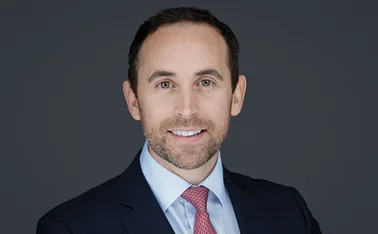
Expertise in Action: Pricing: Looking for support

With brokers calling on insurers to share more information and provide greater practical assistance, how can both parties – and their clients – benefit from better collaboration?
A prolonged cycle of soft rates among many key business sectors has been – in the past at least – an irritation to insurers. However, with rates in the corporate market showing signs of hardening, managing client expectations is critical. For brokers, having access to the right information at the right time can make it easier to prepare for even the largest of price increases.
“If something’s coming down the line – whether it relates to the individual client, their sector or the insurer – we need to know as early as possible,” says Dave Partington, head of retail offices at Gallagher Heath. “If an insurer can engage with us at this point, we can do something about the client’s cover.”
If this doesn’t happen, it can be bad news for all parties. With budgets squeezed, surprise premium increases can be hard for clients to swallow, potentially leading to reductions in cover. The unexpected nature of the increase can also make brokers look unprofessional and insurers appear greedy, creating uneasy working relationships.
Howard Fryer, head of corporate at Bluefin Insurance Services, recently received renewal terms for one client showing a rate increase of 60%. After discussions, the increase was reduced to 20%, falling again to 2.5% when alternative cover was sourced and finally to no increase at all. “Sometimes premiums do have to increase, but it has to be handled sensitively, consistently and with plenty of time allowed to manage it. This type of change to a premium puts everyone’s relationship on the line,” he says.
The need for early engagement is growing, as brokers and insurers strive to retain customers. Paul Williams, UK broking director at Towergate, says: “It’s still possible to get attractive rates for good risks, but it’s beginning to get tricky for others – especially in heavy industry where losses can be larger. We also expect to see difficulties for companies in the food sector, especially if they’re trying to secure large amounts of product recall cover. We are seeing a big change in market sentiment.”
Not up to scratch
Meanwhile, the support available from insurers appears far from perfect. While some insurers are praised by brokers for the support and information they provide, most are criticised for failing to deliver the required service. “On the whole, insurers don’t support brokers sufficiently,” says Guy Malyon, head of broking for London at Aon Risk Solutions UK. “It is patchy; some are good, but the amount of support you receive can also depend on the relationship with the client and the market.”
In particular, brokers would like to receive information to help them assess how rates will move at renewal. To gain a rounded picture, the information needs to include an insight into the performance of the risk, details of the insurer’s underwriting position, and any relevant information relating to the client’s sector.
Partington says he likes to gain information on any issues regarding reinsurance, capacity and the insurer’s underwriting priorities while preparing renewals for clients. “With this, we can build up a picture of what we expect to happen at renewal. It also means we can spot any clients that might encounter problems and take steps to mitigate them,” he explains.
This information can be used alongside the broker’s own insight into the client, its sector and the insurance market to offer a value-added service. Aon, for example, has developed its Global Risk Insight Platform, which contains details of all business it has placed. Aggregating data in this way allows it to identify trends in premium movements. “Six months from renewal we can share this information with a client to help them prepare for a rate rise if this is likely. This helps manage their expectations,” Malyon explains.
As well as providing information to help understand the way the risk is performing, brokers would also like insurers to provide an insight on the markets they cover. This could include specific details on legislation and claims affecting different sectors and information about how underwriters may respond to these factors. “Having this insight would also help us to manage client expectations,” says Williams. “If we knew a sector was experiencing a high incidence of a particular type of claim, we could work with our clients to implement risk-management strategies to ensure it didn’t adversely affect their premium.”
In the care sector, for instance, claims for slips and trips are increasing as awareness of compensation grows – but, by taking appropriate action such as risk assessments and training to reduce the risk, companies in this sector could avoid claims and premium hikes. Likewise, where new legislation is introduced, insurers could provide information on how it will affect different risks. “This type of information would be really useful and, depending on government timetables, could be introduced well in advance of the changes affecting our clients,” adds Williams.
It is also essential this information is provided early enough in the renewal process. Depending on the size of the client, brokers may start preparing for renewal at least six months out, with larger risks requiring even more planning.
Gallagher is fairly typical in the way it handles its renewals, as Partington explains: “We’re continually looking 12 months ahead so we’re prepared for client renewals. Although there can be unexpected events that affect rates, insurers know many of the factors well in advance. Sharing these with us as early as possible helps us identify clients that might face problems at renewal.”
Meanwhile, there have also been calls for more practical support from insurers. This could help placate clients concerned about rate rises and help them take steps to improve the risk. Certainly, when it comes to addressing client concerns about pricing, putting them directly in contact with the insurer can help. This not only gives them the reassurance on the reasons behind the increase but also helps to strengthen the relationship.
But while there are benefits for all parties, bringing together insurer and client can also be fraught with difficulties. Partington says that although all insurers talk about facilitating this exchange, it doesn’t always come easily. “The ability of the underwriters to speak to clients varies immensely,” he explains. “Additionally, you can run into embarrassing situations where they push through a large increase but then can’t explain it to a client. This looks bad.”
In addition to explaining rate increases, brokers also appreciate support from insurers to help clients with risk management. This can help bring down rates, while also strengthening the relationship between the three parties. But, although they stand to benefit, Williams says very few insurers provide a comprehensive risk-management service. “Some insurers will provide advice on risk management but it’s really become an area where brokers can add value,” he adds.
However, he does believe insurers could help support brokers’ risk management advice through the use of technology. Larger clients that have risk spread across multiple sites and countries can struggle with portfolio management. “This was an issue for one of our large corporate clients, and when we analysed its risk we discovered there was a building it hadn’t insured. If insurers provided the technology to enable it to see all the risk in one place, this would be very beneficial,” he adds.
Using technology in this way could also help clients manage risk better. By holding all the data in one place it would enable them to work with their brokers to identify trends that could be driving claims and premium increases.
Long-term relationship
While working more closely together brings advantages, there is wholesale support for the introduction of more long-term agreements in the corporate market to help establish a more mutually beneficial relationship between insurers and their clients. These typically set the rate and any increases for between two and five years, which not only helps clients budget effectively but also creates more long-term sustainability for insurers.
However, long-term agreements are falling out of favour with insurers. Fryer says: “Unfortunately they are becoming less common. With premiums increasing, the cost of the financial smoother becomes more volatile. As a result, more and more insurers only want to entertain clients for 12 months, which makes it much harder to support a three-way relationship.”
He adds: “As the market hardens it is getting more difficult out there, but it’s not as acute as it has been. It would be good to think the industry would learn from the past.”
 Fleet: managing rate rises
Fleet: managing rate rises
With rates hardening across the market, managing risk is becoming increasingly important. A good example of this is in the motor fleet market, where there are a number of strategies that organisations can use to significantly improve the risk.
It’s also particularly relevant as motor is one of the areas where premiums are already showing signs of increasing. According to figures from Aon’s GRIP system, while other lines are relatively flat, motor rates are forecast to be 2.23% up on last year at the end of quarter one.
“Claims tend to be relatively small, so a lot of companies overlook fleet for risk management – but there is a lot that can be done,” says Andy Price, practice leader, Europe, motor fleet at Zurich Risk Engineering.
As a starting point, an organisation should look to identify those areas where it performs well in addition to those where there are opportunities for improvement. This can be achieved through a variety of initiatives including risk assessment, root-cause analysis for claims and debriefing following a collision.
Adapting policies can also help instil better driving practices. As an example, if salespeople are incentivised to make more calls, this can lead to more collisions if they feel compelled to use their phones while driving. Removing this incentive and educating them can change this behaviour.
Telematics also has a part to play. However, Price says it should be seen more as an auditing tool than a way to change behaviour. “It does give instant feedback if a driver does something bad, but it needs to be reinforced with other interventions such as education,” he explains.
The rewards can go beyond improved underwriting, too. For instance, improvements in driving help reduce carbon emissions, so there are benefits for an organisation’s corporate social responsibility strategy. Safer driving can also mean a greater probability of delivery, so some companies are promoting their road safety proposition when they go to market.
But while these strategies can bring significant benefits, Price adds that brokers won’t always be able to convince their clients to adopt them. “The client has to have the appetite to commit to these changes on an ongoing basis,” he says. “Insurers and brokers can only go so far if a client doesn’t want to change.”
Only users who have a paid subscription or are part of a corporate subscription are able to print or copy content.
To access these options, along with all other subscription benefits, please contact info@insuranceage.co.uk.
You are currently unable to print this content. Please contact info@insuranceage.co.uk to find out more.
You are currently unable to copy this content. Please contact info@insuranceage.co.uk to find out more.
Copyright Infopro Digital Limited. All rights reserved.
As outlined in our terms and conditions, https://www.infopro-digital.com/terms-and-conditions/subscriptions/ (point 2.4), printing is limited to a single copy.
If you would like to purchase additional rights please email info@insuranceage.co.uk
Copyright Infopro Digital Limited. All rights reserved.
You may share this content using our article tools. As outlined in our terms and conditions, https://www.infopro-digital.com/terms-and-conditions/subscriptions/ (clause 2.4), an Authorised User may only make one copy of the materials for their own personal use. You must also comply with the restrictions in clause 2.5.
If you would like to purchase additional rights please email info@insuranceage.co.uk








